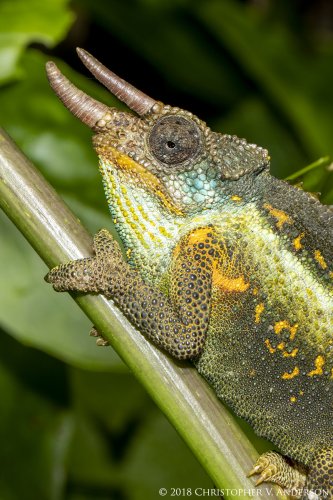Chris Anderson
Dr. House of Chameleons
Hi all,
I've been away from the forum for a bit due to field work, teaching commitments and some home repair projects that have eaten up all my spare time. I thought I would share some images of some chameleons I found last month while teaching a Field Ecology course in Kenya, however.
These first four images are of High-casqued Chameleons (Trioceros hoehnelii), from the W/NW Aberdare Mountains.
More to follow,
Chris
I've been away from the forum for a bit due to field work, teaching commitments and some home repair projects that have eaten up all my spare time. I thought I would share some images of some chameleons I found last month while teaching a Field Ecology course in Kenya, however.
These first four images are of High-casqued Chameleons (Trioceros hoehnelii), from the W/NW Aberdare Mountains.
More to follow,
Chris



























